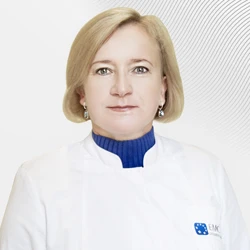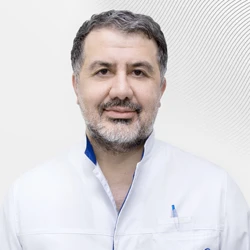Pathogenesis of atherosclerosis
Endothelial dysfunction
The endothelium forms an active biological substrate between blood and other tissues, forming a unique thrombo-resistant layer between blood and potentially thrombogenic subendothelial tissues. The endothelium also modulates tone, growth, hemostasis, and inflammation throughout the circulatory system. Endothelial vasodilating dysfunction is the initial step in the development of atherosclerosis and is caused mainly by the loss of nitric oxide by the endothelium.Endothelial dysfunction is associated with many of the traditional risk factors for atherosclerosis, including hypercholesterolemia, diabetes mellitus, hypertension, and cigarette smoking. In particular, endothelial dysfunction is induced by the oxidation of low-density lipoproteins (LDL), and in some respects this can be considered as the final and main factor. This can be improved by correcting the diet, using statin therapy (HMG-CoA reductase), which increases the bioavailability of nitric oxide, the use of angiotensin converting enzyme inhibitors, high doses of antioxidants such as vitamin C or flavonoids found in red wine and purple grape juice. However, the clinical benefits of these treatments have been convincingly demonstrated only for statins.
1. Inflammation. Signs of inflammation in atherosclerotic lesions have been noted since the earliest histological observations, and inflammation is central to understanding the pathogenesis of atherosclerosis. Macrophages that have been modified by oxidized LDL release of various inflammatory substances, cytokines, and growth factors [29,30]. Among the numerous cells that have been implicated are: oxidation-modified macrophages, cytokines, growth factors, monocyte chemotaxis protein (MCP) -1, soluble CD40 ligand; interleukin (IL) -1, IL-3, IL-6, IL-8 and IL-18, and tumor necrosis factor alpha. Serum C-reactive protein is associated with atherosclerotic cardiovascular diseases, however, genetic data do not confirm its role as a causative risk factor. Lipoprotein-associated phospholipase A2 (Lp-PLA2) is a macrophage-secreted enzyme whose high content increases the risk of myocardial infarction (MI) and stroke in population studies. Cytokines may be involved in the pathogenesis of atherosclerosis. Mediators such as interleukin-1 or tumor necrosis factor-alpha have many atherogenic effects. They enhance the expression of cell surface molecules such as ICAM-1, VCAM-1, CD40, CD40L, and selectin on endothelial cells, smooth muscle cells, and macrophages. Pro-inflammatory cytokines can also induce cell proliferation, promote the production of reactive oxygen species, stimulate matrix metalloproteinases, and induce tissue factor expression. Other cytokines, such as interleukin-4 and interleukin-10, are antiatherogenic. Leukocyte activation is leukocytic (circulating monocytes, as well as to a lesser extent T-lymphocytes) recruitment is observed at the onset of atherosclerotic lesion, providing some evidence of the role of systemic inflammation.
2. Dyslipidemia. Lipid abnormalities play a crucial role in the development of atherosclerosis. Epidemiological studies conducted in countries around the world have shown an increase in the number of cases of atherosclerosis when serum cholesterol concentrations were above 150 mg/dl (3.9 mmol/L).
It is useful to summarize the main points.
High levels of low-density lipoproteins (LDL)Cholesterol and low levels of high-density lipoproteins (HDL) are particularly important risk factors for atherosclerosis.
Low-density lipoproteins accumulate in the cholesterol ether of enriched macrophages (foam cells) of atherosclerotic plaque. The accumulation of cholesterol in foam cells leads to mitochondrial dysfunction, apoptosis, and necrosis, with the release of cellular proteases, inflammatory cytokines, and prothrombotic molecules.
Oxidized low-density lipoproteins contribute to inflammatory and immune changes with increased platelet aggregation and the development of plaque instability. The levels of oxidized LDL are increased in patients with acute coronary syndrome and positively correlate with the severity of the syndrome.
High-density lipoproteins, unlike low-density lipoproteins, have suspected antiatherogenic properties that include reverse cholesterol transport, maintenance of endothelial function, and protection against thrombosis. There is an inverse relationship between the level of high-density lipoproteins-cholesterol in plasma and cardiovascular risks.
Current epidemiological and genetic evidence supports a causal role for triglyceride-rich lipoproteins, especially those containing apolipoprotein C3.
The role of lipoprotein is quite multidimensional due to its structure, where low-density lipoprotein, a similar fragment of lipoprotein-a, promotes the development of atherosclerosis and thrombosis, preventing fibrinolysis. Additional functions of Lipoprotein-a include the initiation of signaling pathways in macrophages and vascular endothelial cells, which leads to changes in cellular phenotype and proatherogenic gene expression, and the formation of foam cells.
3. Hypertension. Arterial hypertension is one of the main risk factors for atherosclerosis, especially in the coronary and cerebral arteries. This can increase the tension of the arterial wall, which can lead to impaired regeneration processes and the formation of aneurysms (pathological protrusion of the artery wall).
4. Smoking. Cigarette smoking is another important risk factor, and it affects all phases of atherosclerosis from endothelial dysfunction to acute clinical events, the latter to a significant extent.
The following observations were made:
In humans, exposure to cigarette smoke worsens endothelium-dependent vasodilation, possibly by reducing nitric oxide (NO).
Cigarette smoking is associated with elevated levels of several markers of inflammation, including C-reactive protein, interleukin-6, and tumor necrosis factor alpha in men and women
Smoking cigarettes can reduce the availability of platelet-derived nitric oxide (NO), reduce platelet sensitivity to exogenous nitric oxide NO (both factors can lead to increased activation and adhesion, increased fibrinogen levels, and decrease fibrinolysis.
Cigarette smoking increases the oxidative modification of LDL and reduces the plasma activity of paraoxonase, an enzyme that protects against the oxidation of low-density lipoproteins.
5. Diabetes mellitus. In addition to the atherogenic effect of dyslipidemia, studies have shown that high insulin levels precede the development of arterial diseases. Atherosclerosis and type 2 diabetes have similar pathological mechanisms, including increased levels of cytokines such as MCP-1 and interleukin-6 (IL-6), which contribute to the accelerated progression of atherosclerosis.
Why the EMC
The first and only clinic in Russia, created in the image of the world's leading clinics
EMC is a multidisciplinary center offering patients a high level of medical services and a personalized approach
Worldwide recognition and awards
 Learn more
Learn more
Worldwide recognition and awards
 Certificates and licenses
Certificates and licenses
Make an appointment for a consultation
Specify your contacts and we will contact you to clarify the details
Reviews
and new products of the EMC
.webp)




.webp)

.webp)



.webp)




.webp)



